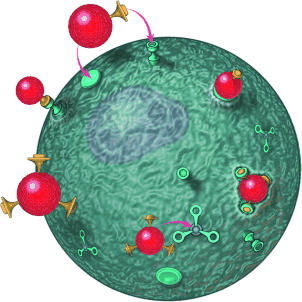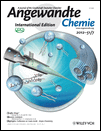Cover Picture: Meter-Long and Robust Supramolecular Strands Encapsulated in Hydrogel Jackets (Angew. Chem. Int. Ed. 7/2012)
Graphical Abstract
Supramolecular self-assembly is used for the fabrication of nanofibers in a microfluidic channel on a macroscopic scale. In their Communication on page 1553 ff., S. Takeuchi et al. report meter-long supramolecular strands that are encapsulated in a robust polymer gel matrix. The strands are aligned under laminar flow conditions. Their mechanical strength is sufficiently high to allow their patterning onto a substrate and use as a template for synthesizing conductive polymers.
Synthetic Methods
In their Communication on page 1548 ff., C.-C. Ling et al. describe an efficient diisobutylaluminum hydride (DIBAL-H) promoted regioselective O desilylation of primary silyl ethers on cyclodextrin derivatives.1

Photocatalysis
In their Communication on page 1653 ff., X. Zhao et al. describe a homogeneous system for the simultaneous H2 production and hydrocarbon oxidation, in which water is the source of both oxygen and hydrogen.1

Drug Delivery
In their Communication on page 1563 ff., P. Mukherjee and co-workers show that gold nanoparticles can be used to elucidate the mechanism of endocytosis of cetuximab and its nanoconjugates in pancreatic cancer cells.1






